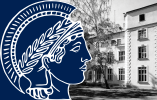Yeang, Chen-Pang: Engineering the Entanglement: Quantum Computation, Quantum Communication, and Re-conceptualizing Information
When Einstein, Podolsky, and Rosen (EPR) presented the famous two-particle thought experiment
in 1935, their purpose was to demonstrate the incompleteness of quantum mechanics and to
challenge the Copenhagen interpretation. This EPR state, or “entangled state,” exhibited properties
defying intuitive, causal explanations, which indicated how odd quantum mechanics is. From David
Bohm to John Bell, those working on the EPR problem pursued the same goal: probing the
conceptual foundation of quantum mechanics. At the end of the last century, however, a group of
physicists and computer scientists turned the entangled state from a puzzle into practical
resources. Setting aside the epistemic issues concerning whether quantum mechanics is complete
and why entanglement is so “strange,” they took for granted the “strange” properties of this
quantum result and appropriated them to explore novel ways of information processing. Why and
how did this turn occur?
This paper examines the rise and ongoing development of such endeavors—known as quantum
computation and quantum communication—since the 1980s. At the core of these endeavors is the
process in which the “strange” features of entanglement such as instantaneous action-at-a-
distance were reinterpreted as opportunities to devise parallel computing algorithms and encrypted
telecommunications. But the physicists and computer scientists were not satisfied with taking
entanglement only as a technique to solve special problems. They moved further to generalize a
“quantum-mechanical” view of automatic computation, modifying the logical premises of computer
science that Alonzo Church and Alan Turing had laid out in the 1930s. Building upon quantum
computation, moreover, they conceived a new paradigm for designing communications codes that
would follow a different information theory from the one Claude Shannon had established in 1948.
The recent history of quantum computation and quantum communication marks the convergence
of three interrelated scientific and engineering research programs: theoretical physicists’ pursuits of
quantum mechanics’ conceptual foundation, industrial-laboratory researchers’ quests for novel
physical means to implement digital computers, and atomic physicists’ experiments on coherent or
single quantum states. And all of them have drawn upon the intellectual resources of quantum
mechanics, computer science, and information theory developed in the past century. Although no
system has yet been physically implemented (albeit strong academic interests and substantial
military funding), the ongoing quantum computation and quantum communication has shown a conspicuous tendency among the physicist community to weave the decades-old central puzzle of
quantum mechanics with a reconceptualization of information.






 Yeang (Presentation)
Yeang (Presentation)